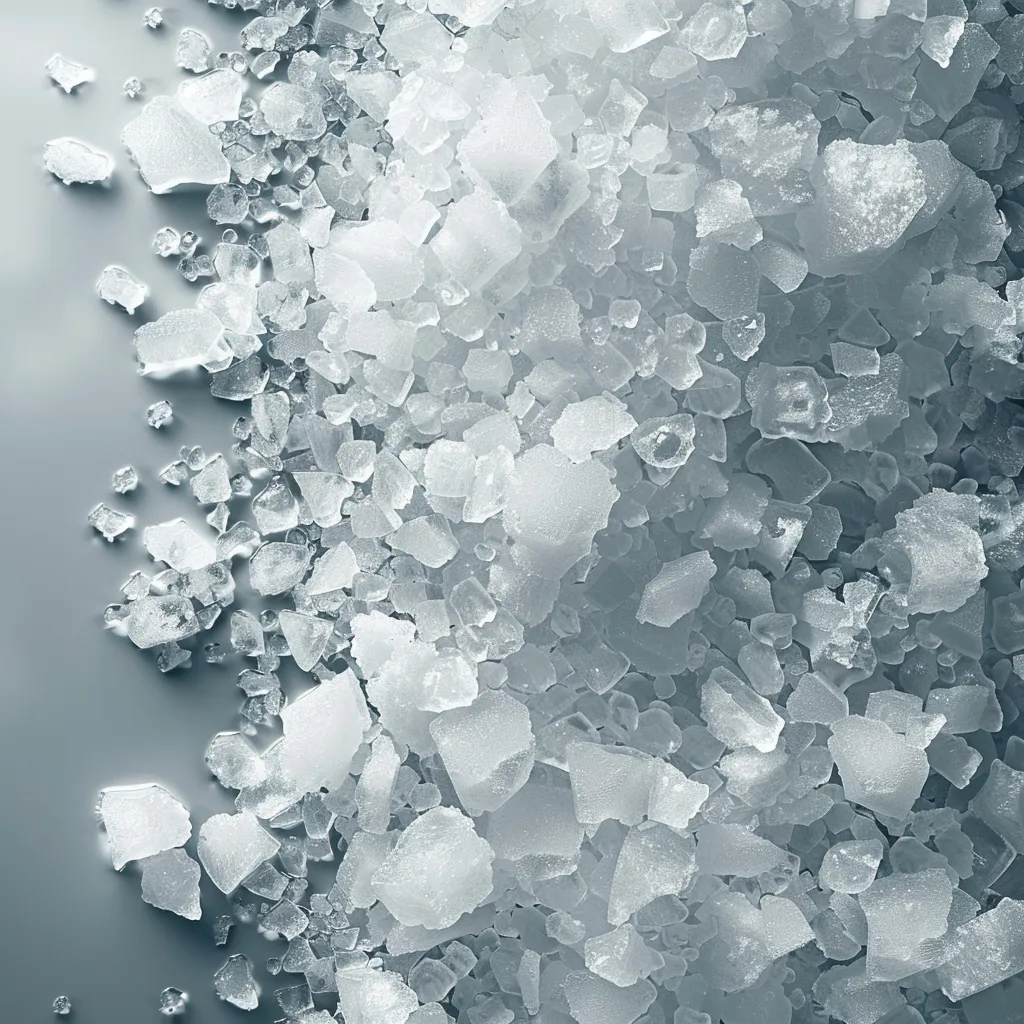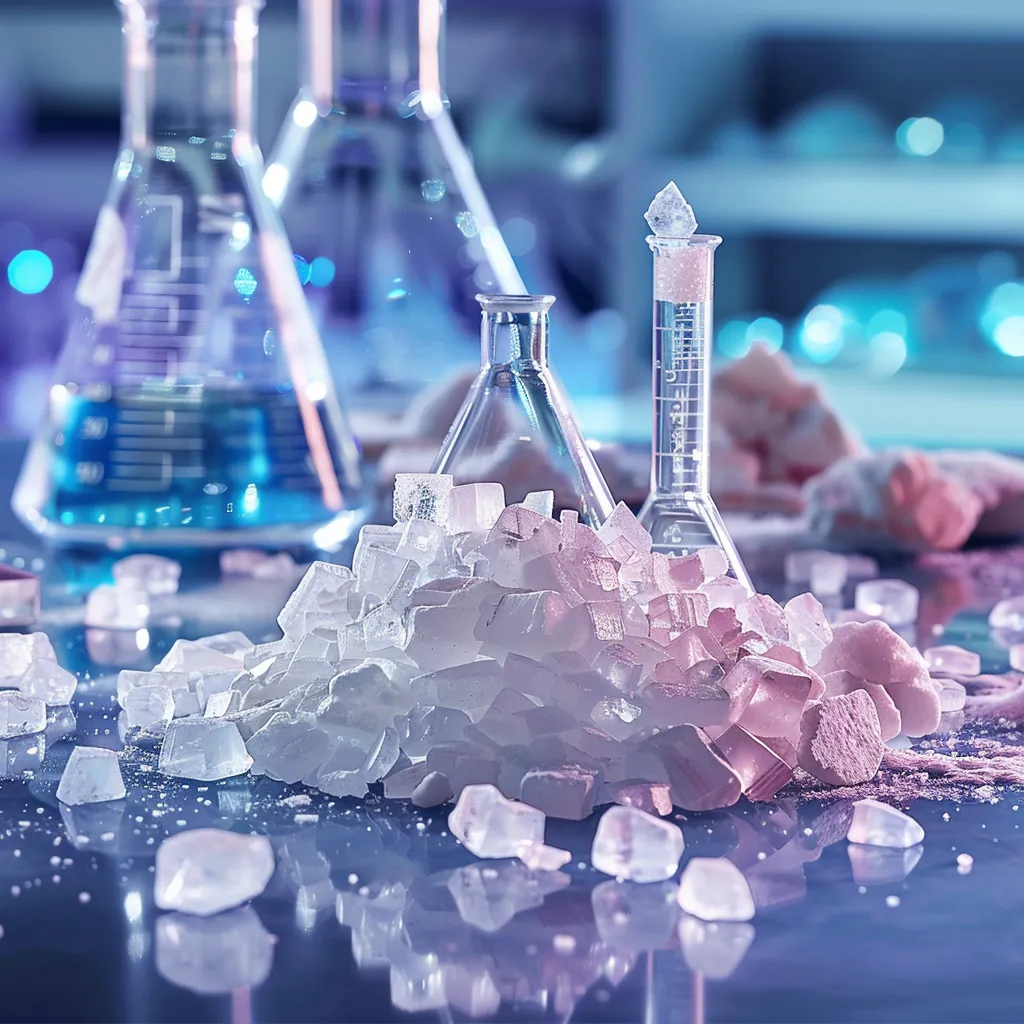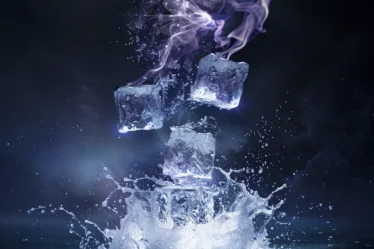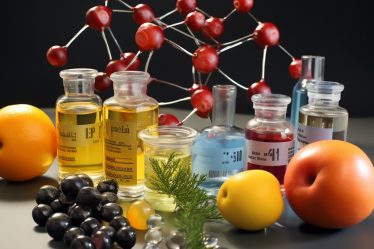
Salts are ionic compounds formed when acids react with bases. They consist of positively charged cations and negatively charged anions, making them electrically neutral.
You use salts daily, from table salt (sodium chloride) to salts in chemical reactions. These compounds are important in many areas, including food preservation, water treatment, and chemical production.
Let’s examine how salts are formed, the various types of salts, salt formula, and their uses across industries.
Salts in Chemistry: Quick Summary
Do you just need the basics? Here’s a simple explanation of what is salt, how salts are formed, and some examples of common salts:
🟠 Salts are ionic compounds made from cations and anions that combine to form neutral compounds, such as sodium chloride ($NaCl$).
🟠 Salt formation occurs through reactions like neutralization, precipitation, or evaporation, where acids and bases or other components react to produce salts.
🟠 Salt formula shows how ions balance charges in a compound, like $Na^+$ and $Cl^-$ in sodium chloride, ensuring the overall charge is neutral.
🟠 Common salts, including sodium chloride, potassium nitrate, and magnesium sulfate, are widely used in food, agriculture, and industrial applications.
🟠 Uses of salts extend to preserving food, softening water, de-icing roads, and creating chemicals like chlorine and soap.
If you find salt formation challenging, don’t worry! Personalized tutoring or interactive chemistry lessons make these concepts more straightforward. Explore more chemistry topics and broaden your knowledge with our free World of Chemistry blogs.
What Are Salts in Chemistry?
Salts are ionic compounds formed when acids and bases react. In chemistry, salts consist of positively charged ions (cations) and negatively charged ions (anions), which combine to make the compound electrically neutral. The most familiar example is sodium chloride ($NaCl$), table salt. When $NaCl$ dissolves in water, it separates into sodium ($Na^+$) and chloride ($Cl^-$) ions, which allows it to conduct electricity.
Salts can form through various chemical processes, including acid-base reactions, neutralization reactions, or through the direct combination of elements. For instance, when hydrochloric acid ($HCl$) reacts with sodium hydroxide ($NaOH$), it forms water ($H_2O$) and sodium chloride:
$HCl + NaOH \rightarrow H_2O + NaCl$
Salt Formation: How Salts Are Created
Salts are created through several key processes in chemistry, each involving different reactions. The most common methods are neutralization, precipitation, and evaporation, all of which produce salts with unique properties depending on the elements involved.
Neutralization Reaction
A neutralization reaction happens when an acid reacts with a base. The acid provides hydrogen ions ($H^+$), while the base provides hydroxide ions ($OH^-$). These ions combine to form water, and the remaining ions form a salt. For example, when hydrochloric acid ($HCl$) reacts with sodium hydroxide ($NaOH$), the result is sodium chloride ($NaCl$) and water:
$HCl + NaOH \rightarrow H_2O + NaCl$
This type of reaction is straightforward and is frequently used in laboratories and industries to synthesize salts.
Precipitation
In precipitation reactions, two soluble salts mix in a solution, exchanging their ions. If the resulting compound is insoluble, it forms a solid salt precipitating out of the solution. For example, combining silver nitrate ($AgNO_3$) and sodium chloride ($NaCl$) produces silver chloride ($AgCl$), a white precipitate:
$AgNO_3 + NaCl \rightarrow AgCl \downarrow + NaNO_3$
Precipitation is a common method for producing salts with low solubility in water.
Evaporation
Salts can also be obtained by evaporating water from saline solutions, leaving solid salt crystals behind. This method is used in salt production from seawater, where evaporation leaves behind sodium chloride crystals. It’s a widely used process in coastal regions for large-scale salt harvesting.
These methods show how different reactions lead to the formation of salts, making them vital in everyday applications and industrial processes.
Salt Formula: Understanding Chemical Formulas of Salts
Salt formulas combine a cation (positive ion) and an anion (negative ion), ensuring the total charge is balanced. This means the overall charge of the salt must be neutral.
For example, sodium chloride ($NaCl$) consists of a sodium ion ($Na^+$) and a chloride ion ($Cl^-$), resulting in a neutral compound because the positive and negative charges cancel each other out.
To balance charges, the number of ions may differ. In calcium chloride ($CaCl_2$), calcium carries a $2+$ charge ($Ca^{2+}$), while chloride has a $1-$ charge ($Cl^-$). To balance this, two chloride ions are needed for every calcium ion, giving the formula $CaCl_2$.
Salts are held together by ionic bonds, where electrons are transferred between atoms, forming charged ions. These ions are bound by electrostatic forces, which create a stable structure. This arrangement often results in salts forming crystalline solids, like the cubic crystals of $NaCl$.
Salt Properties: Ionic Structure and Conductivity
Salts have distinct physical and chemical properties, which stem from their ionic composition. Most salts are solid at room temperature, have high melting and boiling points, and are soluble in water. When dissolved in water or melted, salts conduct electricity because their ions are free to move.
Chemically, salts are produced through neutralization reactions, where an acid reacts with a base. For example, sodium hydroxide ($NaOH$) reacts with hydrochloric acid ($HCl$) to form sodium chloride ($NaCl$) and water.
List of Salt Properties
- Ionic Bonds: Strong bonds formed between oppositely charged ions.
- High Melting and Boiling Points: Due to the strength of ionic bonds, salts require high temperatures to melt or boil.
- Solubility: Most salts dissolve in water, separating them into individual ions.
- Electrical Conductivity: Salts conduct electricity when dissolved in water or melted because the ions can move freely.
- Brittleness: Salts in solid form are often brittle and can shatter under pressure.
Common Types of Salts: Examples You Should Know
Salts are essential compounds found everywhere, from your kitchen to industrial plants. Here’s a detailed look at some of the most common salts, their chemical makeup, and practical uses.
Sodium Chloride (NaCl)
Sodium chloride, or common table salt, is composed of sodium ($Na^+$) and chloride ($Cl^-$) ions. It plays an essential role in human health by regulating fluid balance and nerve function.
Beyond the kitchen, sodium chloride is widely used in industrial processes, including the production of chlorine and caustic soda via electrolysis. It is also crucial for de-icing roads in colder climates. Its simple ionic structure makes it an important teaching example in chemistry classes.
Sodium Bromide (NaBr)
Sodium bromide consists of sodium ($Na^+$) and bromide ($Br^-$) ions. Historically used as a sedative, sodium bromide is now more commonly used in chemical synthesis and water treatment.
In the oil drilling industry, it’s used as a dense fluid to stabilize wells. Sodium bromide is also a precursor for various organic and inorganic bromine compounds.
Potassium Nitrate (KNO₃)
Potassium nitrate, also called saltpeter, consists of potassium ($K^+$) and nitrate ($NO_3^-$) ions. It is known for its use in fertilizers due to its high nitrogen content, promoting plant growth.
It’s also a key component in explosives like gunpowder, as well as in fireworks where it provides oxygen to fuel the explosion. Potassium nitrate’s oxidizing properties make it useful in the food industry for curing meats and preserving food.
Calcium Chloride (CaCl₂)
Calcium chloride is composed of calcium ($Ca^{2+}$) and chloride ($Cl^-$) ions. This salt is highly hygroscopic, meaning it can absorb moisture from the air, making it ideal as a dehumidifier or drying agent.
It’s also used for de-icing roads and in concrete mixtures to accelerate setting time. In the food industry, it can firm vegetables during the canning process and maintain crispness in pickles.
Ammonium Chloride (NH₄Cl)
Ammonium chloride is a salt of ammonium ($NH_4^+$) and chloride ($Cl^-$) ions. It’s commonly used in fertilizers to provide nitrogen, a vital nutrient for plant growth.
Ammonium chloride is also found in dry-cell batteries and is used in metalwork to clean surfaces before soldering. In medicine, it’s an expectorant that helps clear mucus from the respiratory system.
Magnesium Sulfate (MgSO₄)
Magnesium sulfate, known as Epsom salt, consists of magnesium ($Mg^{2+}$) and sulfate ($SO_4^{2-}$) ions. It is widely used in agriculture to correct magnesium deficiencies in soil, promoting healthy plant growth.
In medicine, it is used to treat eclampsia, a condition during pregnancy. Additionally, magnesium sulfate is popular in bath salts, where it is believed to help relax muscles and relieve soreness.
Baking Soda (NaHCO₃)
Baking soda, or sodium bicarbonate, consists of sodium ($Na^+$) and bicarbonate ($HCO_3^-$) ions. In baking, it acts as a leavening agent, causing the dough to rise.
Its mild alkaline nature makes it a versatile cleaning agent, deodorizer, and antacid to neutralize stomach acid. Baking soda is also used in fire extinguishers, releasing carbon dioxide when heated, smothering the fire.
Potassium Chloride (KCl)
Potassium chloride contains potassium ($K^+$) and chloride ($Cl^-$) ions. It’s commonly used in fertilizers as a rich source of potassium, which is essential for plant health.
In medicine, potassium chloride supplements help treat or prevent low potassium levels in the blood. Potassium chloride is also a salt substitute for people who need to reduce their sodium intake for health reasons.
These examples highlight the diversity of salts and their essential roles in everyday life and industrial applications. Each salt has a unique composition and a wide range of uses, from healthcare to agriculture and chemical production.
Advance Your Knowledge in Salts in Chemistry
In this blog, we explored the formation of salts, their formulas, and how common salts like sodium chloride and sodium bromide are used in various applications. You’ve learned about ionic bonds, charge balancing, and different types of salts.
Do salt formation or ionic compounds seem tricky? A qualified chemistry instructor can explain complex topics in a way that makes sense to you, making organic and inorganic chemistry understandable and enjoyable.
Search for a tutor using phrases like “organic chemistry tutor Liverpool” or “inorganic chemistry teacher Edinburgh” on platforms like meet’n’learn. You’ll find someone who can tailor lessons to your needs.
If you prefer learning in a group, search for “chemistry classes Leeds” or “chemistry lessons London” online. The search will lead you to chemistry tutoring nearby.
Salts: Frequently Asked Questions
1. What are salts in chemistry?
Salts are ionic compounds made from positively charged cations and negatively charged anions that create a neutral compound.
2. How are salts formed?
Salts are created through neutralization reactions between acids and bases or precipitation and evaporation.
3. What is the chemical formula of a salt?
A salt’s chemical formula represents the ratio of its cations and anions, like $NaCl$ for sodium chloride, where charges are balanced.
4. Can salts conduct electricity?
Yes, when salts dissolve in water, they dissociate into ions, enabling the solution to conduct electricity.
5. What are common types of salts?
Common salts include sodium chloride ($NaCl$), calcium chloride ($CaCl_2$), potassium nitrate ($KNO_3$), and magnesium sulfate ($MgSO_4$).
6. How is sodium bromide used in industry?
Sodium bromide is commonly used in the production of pharmaceuticals, as a chemical reagent, and in oil drilling fluids to stabilize boreholes.
7. Are all salts soluble in water?
No, not all salts are soluble in water; solubility depends on the specific ions that make up the salt.
8. What is the difference between sodium chloride and sodium bromide?
Sodium chloride ($NaCl$) is table salt used for food and de-icing, while sodium bromide ($NaBr$) is mainly used in medicine and chemical applications.
References:
1. Thought.Co
2. Britannica
3. Wikipedia



